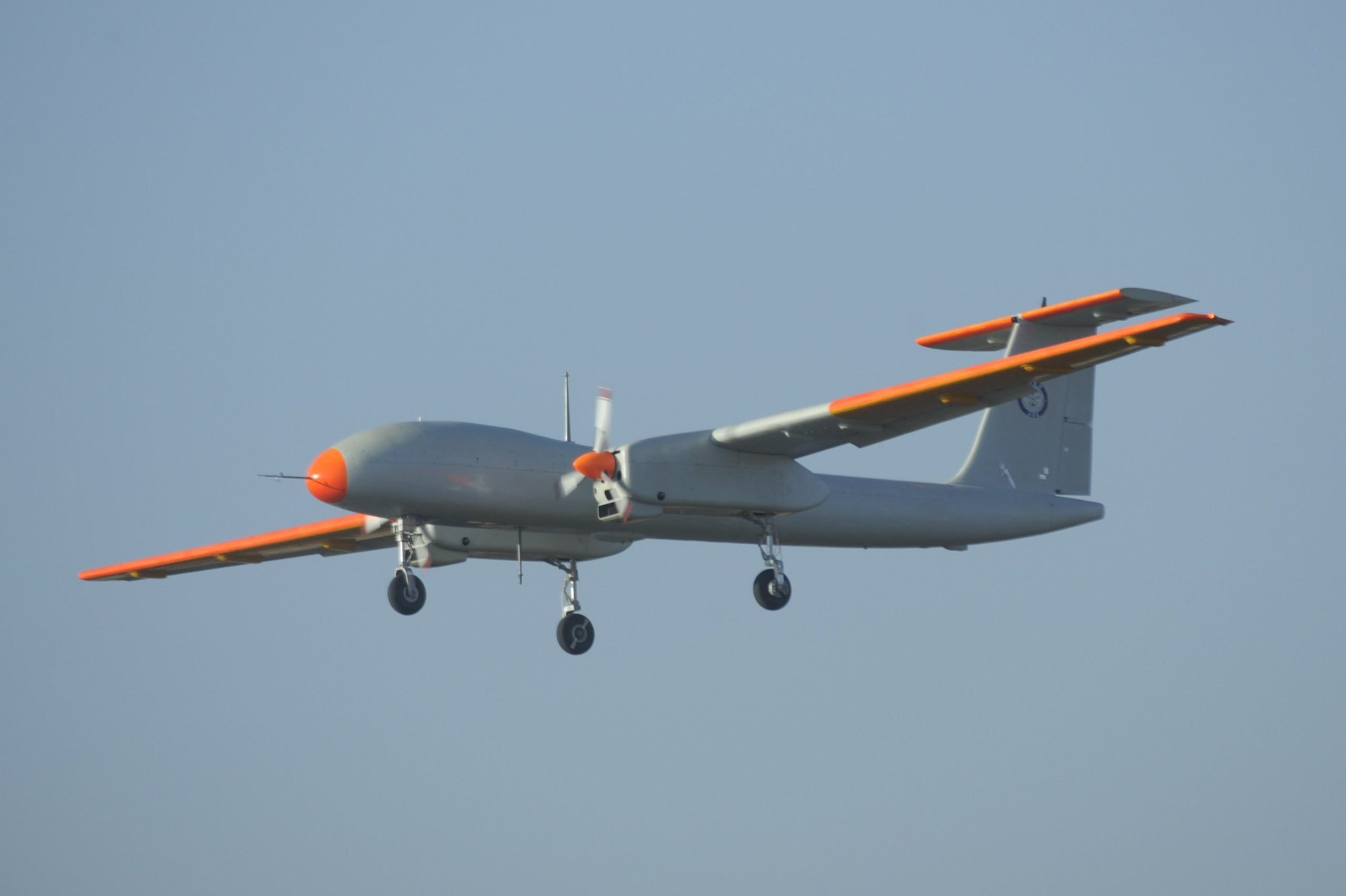In a major step toward defence self-reliance, the TAPAS BH-201 unmanned aerial vehicle (UAV), developed by the Aeronautical Development Establishment (ADE) under DRDO, is set to commence flight trials with an indigenously developed engine in the coming months.
The new engine, designed by the Vehicle Research and Development Establishment (VRDE) in collaboration with JAYEM Automotives, is a 2.2L, 4-cylinder inline turbocharged CRDi system. It delivers 180 HP at 11,000 feet and is capable of operating up to 32,000 feet, supported by a Full Authority Digital Engine Control (FADEC) system for automatic operation and redundancy.
From Imports to Indigenous Power
The move replaces imported propulsion systems with domestic alternatives, raising TAPAS’s indigenous content to nearly 80%. Officials say the shift is crucial to addressing earlier program delays linked to propulsion challenges and aligning the UAV closer to Joint Services Qualitative Requirements (JSQRs).
UAV Capabilities Tested
The Medium Altitude Long Endurance (MALE) UAV has already demonstrated:
- A service ceiling of 28,000 feet
- 18 hours of endurance
- 200+ successful test flights across varied mission profiles, including joint trials with the Indian Navy.
Although it fell short of the JSQR benchmarks of 30,000 feet altitude and 24-hour endurance, the UAV continues to undergo upgrades aimed at bridging those gaps.
Certification Trials Ahead
The upcoming trials with the indigenous engine will test:
- Aerodynamics
- Flight control systems
- Propulsion integrity
- Airframe structure
Successful validation is critical for securing airworthiness certification and clearing the path for operational induction.
Strategic Role in National Defence
The Indian Navy has shown particular interest in TAPAS for maritime surveillance, especially in areas like the Andaman and Nicobar Islands, where shorter runways demand specialized UAV capabilities.
Defence officials say the experience from the TAPAS program will serve as a catalyst for next-generation UAV development, boosting India’s position in the global drone market while strengthening domestic defence manufacturing.
A Pivotal Milestone
The integration of the indigenous engine represents more than a technological upgrade. It signals India’s growing mastery in aerospace propulsion and its determination to reduce reliance on imports for critical platforms.
The flight trials will be closely monitored as a litmus test of India’s self-reliance drive in UAV technology, and a decisive step toward deploying world-class indigenous drones for military use.













